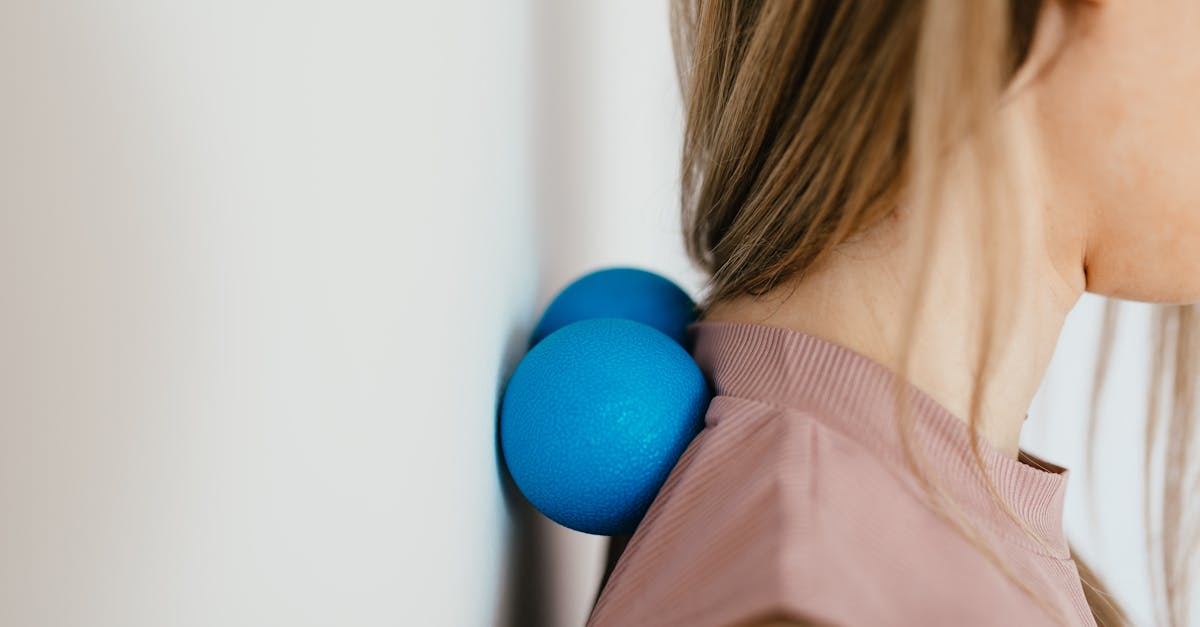In Short, neck pain triggers refer to various everyday activities and habits that can lead to discomfort and strain in the neck area. Recognizing these triggers is critical for maintaining long-term health and wellness. Commonly, poor posture, prolonged computer usage, and mental stress contribute to neck pain. By identifying these triggers, individuals can implement strategies that not only relieve existing pain but also prevent future occurrences. This understanding enables people to adapt their daily routines effectively, ensuring greater mobility and an improved quality of life. |
Neck pain can often be an insidious problem lurking in our daily routines. Common triggers include poor posture from slumping over a desk or smartphone for hours, causing undue muscle strain and tension. Activities such as binge-watching TV, leaning forward, or even wearing improper supportive garments can exacerbate discomfort. Understanding these everyday risks is essential for mitigating pain and maintaining optimal neck health.

Experience Enhanced Well-Being with Pulse Align
At Pulse Align, we recognize the importance of maintaining a harmonious balance in your body. Our innovative, non-invasive approach utilizes gentle, imperceptible pulses to help restore your body’s natural posture and balance. This method supports the body’s innate processes, easing unwanted tension and promoting relaxation, allowing you to feel your best.
Promoting Natural Recalibration
Unlike conventional methods that may focus on discomfort, Pulse Align is dedicated to fostering a holistic sense of well-being. Our technique allows your body to recalibrate naturally, encouraging improved muscle tone symmetry and posture. By enhancing your neuromuscular health, this gentle approach often leads to increased comfort in daily activities, empowering you to take charge of your well-being without the need for invasive treatments.
A Personalized Journey to Wellness
Pulse Align values each client’s unique journey. Many individuals who have embraced our service report positive changes—feeling more at ease and balanced in their bodies. Feedback reveals improvements in neck and back tension, along with a noticeable enhancement in overall well-being. We invite families to explore how our wellness solutions cater to individuals of all ages, including children and pregnant women, creating a comprehensive environment for family health.
Discover the Pulse Align Experience
If you’re ready to embark on your path to enhanced well-being, we encourage you to visit our website to learn more about our services. With locations across La Prairie, Mont-Royal, and Terrebonne, finding a nearby clinic is easy. Schedule a consultation today for yourself or your entire family. Remember, Pulse Align complements your wellness journey alongside your healthcare services without replacing them. Experience a safe, non-invasive approach to feeling your best—join the Pulse Align community now!
Medical Disclaimer
The information and advice provided on this site do not replace the advice, diagnosis, or treatment of a healthcare professional. Please note that the author of this article is neither a doctor nor a specialist in a medical specialty as defined by the Collège des médecins du Québec. Always consult your doctor for any medical questions. For more details, please read our complete Legal Notice.
- Poor Posture: Slouching while sitting or standing can strain the neck.
- Prolonged Screen Time: Staring at a computer or smartphone without breaks can lead to discomfort.
- Physical Strain: Lifting heavy objects incorrectly may cause strain on the neck muscles.
- Sleeping Position: Using too many pillows or sleeping on your stomach can misalign the neck.
- Stress: Mental tension can cause neck muscles to tighten and create pain.
- Repetitive Movements: Frequent neck turning or tilting during daily tasks can lead to stiffness.
- Car Accidents: Whiplash from sudden stops or collisions can cause significant neck injury.
- Inadequate Support: Poor chair and desk setup can fail to support proper neck alignment.
- Cold Drafts: Exposure to cold air can create muscle stiffness in the neck area.
- High-Impact Sports: Activities that involve sudden impacts can lead to neck injuries.

Understanding Everyday Neck Pain Triggers
Neck pain is a common issue that can often stem from various daily activities and habits. By identifying and understanding these triggers, you can take proactive steps to alleviate discomfort and prevent future episodes. This article explores key neck pain triggers, including physical strain, poor posture, and more subtle influences like mental stress and environmental factors. By addressing these elements in your daily routine, you can reclaim your health and enhance your overall well-being.
Physical Strain from Daily Activities
One of the most prevalent causes of neck pain arises from physical strain associated with routine activities. Sitting for prolonged periods, especially while hunched over a computer or looking down at a smartphone, can lead to significant muscle tension. This situation often results in what is commonly referred to as “tech neck,” where the muscles in the neck become strained due to poor positioning.
Engaging in heavy lifting or sudden movements can also contribute to muscle strains and injuries. It’s important to practice proper lifting techniques and to take frequent breaks to stretch and relieve tension during long periods of activity.
Poor Posture: A Silent Culprit
Poor posture is a subtle yet impactful factor that can lead to chronic neck pain. Many individuals unknowingly adopt positions that strain the neck, such as slouching while sitting or sleeping with excess pillows. Over time, these habits can create misalignment in the cervical spine, resulting in discomfort.
To combat this, it’s crucial to be mindful of your posture throughout the day. Consider ergonomic adjustments to your workspace, choosing supportive furniture and ensuring that your computer screen is at eye level. Moreover, while sleeping, try to maintain a aligned head and neck position to facilitate natural spinal curvature.
Mental Stress and Tension
Mental health plays a significant role in physical wellness, and stress can be a considerable trigger for neck pain. When under pressure, people often hold tension in their neck and shoulder muscles without realizing it. This can lead to muscle spasms and a heightened sensation of pain.
Practicing stress management techniques, such as meditation, yoga, or deep-breathing exercises, can be instrumental in reducing both mental and physical tension. Incorporating regular breaks to relax and reset throughout the day can help maintain a more optimal state of well-being.
Environmental Factors
Often overlooked, environmental factors can also contribute to neck pain. For example, improper use of gadgets, such as holding a phone between your shoulder and ear during long calls, can strain neck muscles over time. Even something as simple as wearing a flimsy bra can lead to poor support and alignment, exacerbating discomfort.
To mitigate these effects, adopt healthy habits around technology use, such as using hands-free devices and taking frequent breaks from screens. Be conscious of the clothes you wear and ensure they provide adequate support for your body.
Being Proactive in Prevention
To develop a proactive approach to reducing neck pain, consider integrating regular exercises that strengthen the neck and upper back muscles into your routine. Gentle stretches and proper alignment techniques can help restore balance and reduce discomfort.
Understanding and addressing the daily triggers of neck pain can lead to significant improvements in your quality of life. Taking these steps not only aids in alleviating current discomfort but also plays a vital role in fostering long-term health and function.
| Trigger | Description |
| Poor Posture | Slouching or leaning forward while sitting can create strain on neck muscles. |
| Prolonged Screen Time | Staring at screens for hours leads to muscle tension and discomfort. |
| Sleep Position | Using too many pillows or sleeping on your stomach may misalign the neck. |
| Stress | Psychological stress can lead to muscle tightness, exacerbating neck pain. |
| Lifting Heavy Objects | Improper lifting techniques can strain neck muscles and ligaments. |
| Daily Activities | Bending over while gardening or cleaning can cause acute neck strain. |
| Phone Usage | Cradling a phone between ear and shoulder can overstretch neck muscles. |
| Cold Drafts | Exposure to cold air can lead to muscle stiffness in the neck area. |
| Dehydration | Inadequate hydration can contribute to muscle cramps and tension. |
| Inadequate Warm-up | Not warming up before physical activities may lead to strains. |

Transformative Wellness Journeys with Pulse Align
Clients from various regions, including La Prairie and Mont-Royal, have shared their remarkable experiences in addressing neck pain triggers through Pulse Align’s holistic methods. Many have reported feeling significant improvements naturally, expressing how these approaches support the body’s inherent ability to recalibrate and restore balance within their systems.
In Châteauguay, satisfied clients frequently highlight how Pulse Align’s unique strategies have not only alleviated their discomfort but also enhanced their overall well-being. The compassionate team collaborates seamlessly with local healthcare professionals, creating an integrated support system for individuals seeking relief from everyday neck pain.
Residents of Sainte-Marie and Charlesbourg have similarly discovered the benefits of tailored sessions centered around understanding the underlying causes of their pain. Clients often express gratitude for the practical guidance received, which empowers them to make informed decisions about their wellness goals.
For those in Saint-Jérôme and Deux-Montagnes, the well-received programs at Pulse Align have become a beacon of hope for individuals looking to enhance their body function and overall quality of life. The supportive atmosphere fosters a community of individuals committed to their wellness journeys, reminding clients that they are not alone in their struggles with neck pain.
Pulse Align is dedicated to walking alongside clients and their families, ensuring that support extends beyond the clinic. By recognizing the unique triggers that contribute to distress, clients in Chicoutimi and Les Escoumins can embrace a more balanced life. With each testimonial highlighting positive experiences, it becomes clear that at Pulse Align, genuine healing takes precedence.
To discover how Pulse Align can assist in your personal wellness journey and improve your body’s function, visit our Our Clinics page for more information and local support tailored to your needs.
Everyday Neck Pain Triggers to Be Aware Of
Neck pain has become an increasingly common ailment in today’s fast-paced world, where the combination of sedentary lifestyles and technological reliance often leads to discomfort. Among the many factors that contribute to neck pain, certain daily activities and habits can significantly exacerbate the problem. Understanding these triggers is crucial for anyone seeking to manage or prevent this pervasive issue.
One of the most prevalent offenders is poor posture. Whether sitting hunched over a computer or craning over a smartphone, poor alignment of the head and neck can lead to strain on the surrounding muscles. Over time, these habits can contribute to chronic discomfort, setting the stage for more serious conditions. Many individuals may not realize that spending hours in this position can lead to not only muscle tension but also long-term structural issues.
Muscle strain is another significant cause of neck pain. Engaging in repetitive motions, lifting heavy objects without proper technique, or simply overexerting oneself can strain the cervical muscles. This is especially common in individuals who fail to warm up adequately before physical activity. Moreover, as people often lift, twist, and bend inappropriately, they risk causing unnecessary stress on their necks.
Stress is another overlooked factor that can exacerbate neck pain. Psychological stress often manifests physically, leading to tension and spasms in the neck muscles. Individuals going through challenging periods may find themselves unconsciously tightening their neck and shoulder muscles, causing discomfort. To manage stress, incorporating relaxation techniques such as yoga or meditation can be beneficial, promoting not only mental health but also physical well-being.
Surprising daily habits can also trigger neck pain. Activities such as binge-watching television or even leaning forward for prolonged periods can lead to discomfort. While enjoying a favorite show, many individuals fail to consider their neck alignment and can find themselves in an awkward position for hours on end. Simple adjustments, like taking breaks and changing posture regularly, can be effective strategies to alleviate strain.
Sleeping with neck support can significantly impact one’s morning comfort levels. Using too many pillows or opting for inadequate support can place the neck at an unnatural angle, leading to stiffness and pain upon waking. A proper pillow that promotes alignment is crucial for reducing the risk of waking up with discomfort and ensuring a restful night’s sleep.
High-impact activities and sports can also trigger neck injuries. Whether through falls, collisions, or sudden movements, traumatic incidents can lead to acute neck pain. Understanding the risks associated with certain activities and employing safety measures, such as warm-ups and protective gear, can significantly reduce the chances of injury.
Osteopathy, naturopathy, and innovative techniques are vital in addressing chronic neck pain. Experts, such as Dr. Sylvain Desforges, leverage their knowledge in these fields to develop tailored treatment plans that integrate advanced therapies. These approaches focus on providing evidence-based care that optimizes patient well-being, addressing not only the symptoms but also the underlying causes of neck discomfort. By incorporating elements like spinal decompression and shockwave therapy, practitioners aim to offer lasting relief and improved mobility for affected individuals.
Ultimately, awareness of these everyday triggers is the first step towards reclaiming movement and reducing neck pain. Adopting healthier habits, maintaining better posture, and seeking professional guidance when necessary can pave the way for a more comfortable existence.
Neurovertebral Decompression Technology by TAGMED and Its Benefits for Chronic Pain Sufferers
Mécanisme d’action
The neurovertebral decompression technology by TAGMED operates by applying a controlled and progressive traction force to the spine. This innovative approach effectively increases the space between the vertebrae, thereby reducing pressure on the intervertebral discs and nerve roots. By facilitating improved circulation of fluids in the targeted area, this technology plays a crucial role in diminishing inflammation and alleviating pain. As the pressure is relieved, the intervertebral discs are allowed to rehydrate and regain their optimal height, which can lead to a significant reduction in discomfort.
Avantages spécifiques
This non-invasive method proves to be an effective solution for managing chronic pain and symptoms related to conditions such as herniated discs, bulging discs, and moderate to severe spinal stenosis. By decreasing the pressure exerted on nerve structures and optimizing fluid circulation around the discs, TAGMED’s neurovertebral decompression fosters faster recovery and enhances the overall quality of life for a diverse range of patients. Enhanced mobility and reduction of persistent pain contribute to a restored sense of normalcy in these individuals’ daily activities.
Comparaison avec d’autres traitements
When compared to other commonly employed therapeutic approaches to managing the afflictions discussed in Neck Pain Triggers to Watch Out For Every Day, such as pain medications, corticosteroid injections, surgery, or traditional physical therapy, TAGMED’s neurovertebral decompression shines through due to its unique advantages. Unlike invasive procedures, this technique requires no surgical intervention, significantly reducing the risks associated with medications and enabling a quicker recovery time for patients. Additionally, the efficacy of neurovertebral decompression in alleviating pain makes it a preferred option for those hesitant to rely on pharmacological treatments.
Études de cas ou témoignages
Numerous patients have reported notable improvements following treatment with TAGMED’s neurovertebral decompression. Testimonials highlight significant and lasting reductions in pain, expedited return to daily activities, and a marked decrease in reliance on medication. For instance, one patient with a long history of chronic neck pain noted that after several sessions of neurovertebral decompression, they experienced a sustained reduction in pain levels, allowing them to engage more actively in hobbies and family outings that had previously been affected. Such success stories underscore the potential of this technology to transform the lives of those struggling with chronic pain.
Everyday activities can often be the unsuspecting culprits behind neck pain that many individuals experience. Recognizing and addressing these triggers is vital for maintaining a pain-free life. One of the most common causes is poor posture, specifically the way we position our bodies when sitting or standing. Prolonged periods hunched over a computer, smartphone, or even while binge-watching our favorite shows can lead to significant strain on the neck muscles.
Another subtle trigger that often goes unnoticed is the physical strain associated with early morning routines, like sleeping with too many pillows or using a pillow that lacks proper support. These habits can create tension that not only impacts the neck but can also radiate discomfort throughout the upper back and shoulders. Daily stressors play a substantial role in neck discomfort, as increased muscle tension from psychological stress manifests physically, tightening the muscles and potentially leading to chronic pain.
Even seemingly harmless activities such as leaning forward to engage with a task can activate neck pain. It is essential to be mindful of body alignment throughout the day to mitigate these risks. Implementing frequent breaks, practicing ergonomic adjustments at workstations, and engaging in stretching exercises can prove beneficial in alleviating discomfort.
By being proactive and aware of these environmental and personal habits, individuals can take significant steps towards minimizing their neck pain. It is crucial to listen to our bodies and seek solutions that enhance both physical and mental well-being. Understanding the everyday triggers allows for better management and ultimately leads to a healthier and more fulfilling lifestyle.

Do you suffer from a chronic condition that responds little or not at all to conservative treatments?
Understanding the everyday triggers that lead to tension and discomfort in the neck area is paramount for achieving balance and well-being. At Pulse Align, we present a non-invasive, innovative method designed to assist the body in restoring its natural balance and posture through gentle, imperceptible pulses. This approach encourages the body to naturally release muscle and joint tension, gently addressing common discomforts and promoting an overall sense of well-being.
It’s important to note that Pulse Align does not target discomforts or conditions directly; rather, we focus on aiding the body in its ability to recalibrate itself naturally. Many clients have found that embracing this method often results in remarkable improvements not only in comfort but also in posture and overall wellness, which can greatly contribute to daily activities.
Our personalized approach at Pulse Align ensures that each client receives the attention and care needed to unlock their body’s natural potential. Clients have shared inspiring testimonials highlighting significant improvements in neck and back tension, reduced feelings of discomfort, and enhanced overall wellness. These experiences underline the impact that gentle, supportive techniques can have on one’s daily life without the need for invasive interventions.
For those interested in exploring how Pulse Align can fit into their wellness journey, we invite you to visit our website for more information. You can find nearby locations, such as La Prairie, Mont-Royal, and Terrebonne, and easily book a consultation for yourself or your family. We emphasize that Pulse Align systems work alongside existing health care services, ensuring a comprehensive wellness approach. Book an appointment online today to discover the benefits our family-friendly and safe, non-invasive methods can offer.
At Pulse Align, we believe that promoting a healthy lifestyle should be accessible to everyone, regardless of age. Our services are designed to complement any healthcare regimen, creating a holistic environment that enhances neuromuscular health, symmetry, and nervous system recalibration. For more information about our services, visit our website: Pulse Align.
Medical Disclaimer
The information and advice provided on this site do not replace the advice, diagnosis, or treatment of a healthcare professional. Please note that the author of this article is neither a doctor nor a specialist in a medical specialty as defined by the Collège des médecins du Québec. Manual medicine, functional medicine, and sports medicine as described on this site exclude any medical treatment or diagnosis made by a doctor or medical specialist. Always consult your doctor for any medical questions. For more details, please read our complete Legal Notice.
Frequently Asked Questions
Neck Pain
Do strengthening exercises help?
Yes, strengthening the neck and shoulder muscles can stabilize the cervical region and reduce pain.
Are heated cervical collars useful?
Yes, they combine support and warmth, providing temporary relief.
Should I avoid certain sleeping positions?
Sleeping on your stomach with your head turned sideways puts extra pressure on the neck. Sleeping on your back or side is preferable.
Can dental issues cause neck pain?
Sometimes, TMJ disorders or teeth grinding can cause muscle tension radiating to the neck.
Is swimming helpful?
Yes, swimming improves posture, strengthens back muscles, and can relieve cervical tension.
Should I use heat or cold for neck pain?
Heat relaxes muscles and improves circulation, while cold reduces inflammation. Choose according to your pain type.
Is cervical osteoarthritis common?
Yes, it’s common with age. Cartilage in the cervical joints wears down, causing pain and stiffness.
Does dehydration worsen neck pain?
Mild dehydration may increase muscle fatigue, indirectly affecting neck pain.
Is whiplash a common neck injury?
Car accidents often cause whiplash, resulting in neck pain and stiffness.
Is phone usage a factor?
Yes, looking down at your phone for long periods (Text Neck) increases pressure on cervical vertebrae.
David Lambert understands that neck pain is far more than a physical ache—it’s a roadblock to living the life you love. As a Neck Pain Awareness Advocate at Pulse Align, he is committed to shedding light on the underlying causes, sharing practical relief strategies, and offering genuine support to readers seeking to reclaim their freedom of movement. With a warm, empathetic voice and a keen eye for the latest in pain management research, David leads conversations that uplift, educate, and inspire. He believes that every individual deserves to feel heard, understood, and guided toward healing, one step at a time.
Medical Disclaimer
The information and advice provided on this site do not replace the advice, diagnosis, or treatment of a healthcare professional. Please note that the author of this article is neither a doctor nor a specialist in a medical specialty as defined by the Collège des médecins du Québec. Manual medicine, functional medicine, and sports medicine as described on this site exclude any medical treatment or diagnosis made by a doctor or medical specialist. Always consult your doctor for any medical questions. For more details, please read our complete Legal Notice.




